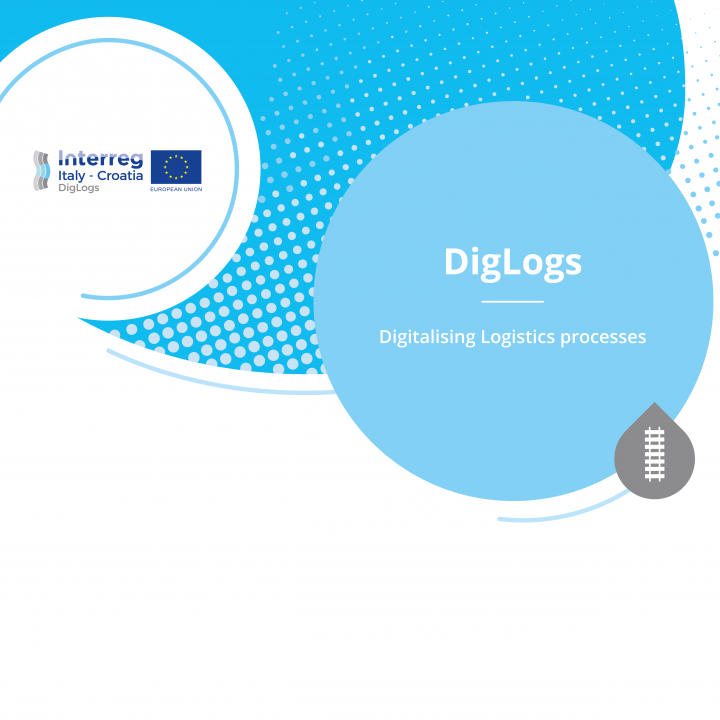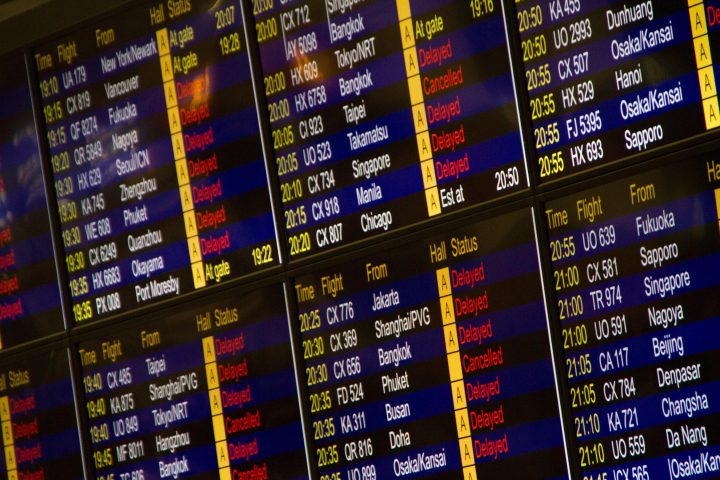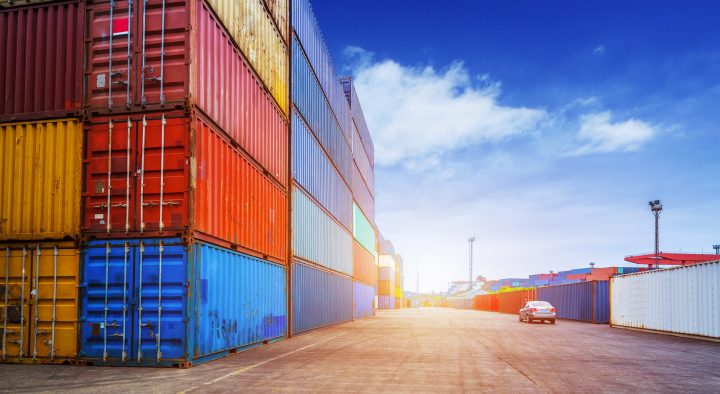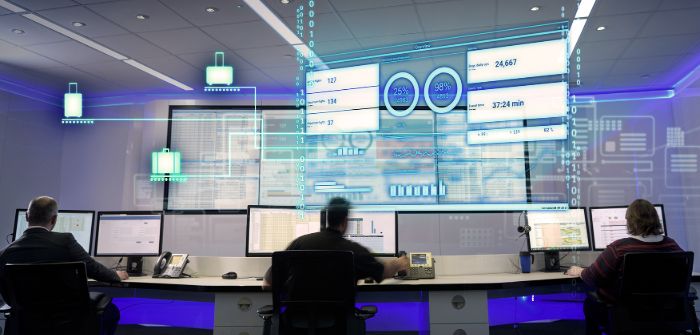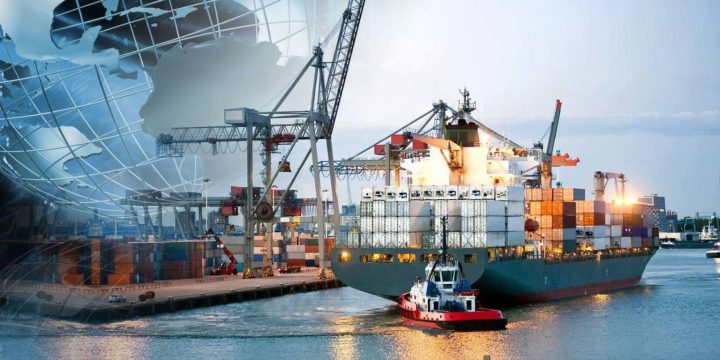5th DigLogs Newsletter
DigLogs newsletter for Transport Operators and Authorities This is the fifth edition of Newsletter series of the Subscribe Past Issues DigLogs project!
DigLogs is a European project funded by the INTERREG Italy – Croatia CBC Programme priority axis 4 – Maritime transport that aims to create the technological solutions, models and plans to establish the most advanced digitalised logistic processes for multimodal freight transport and passengers’ services in the Italy-Croatia area. This project will have a significant impact in terms of diffusion and effectiveness of digitalised services and ICT support for the quality, safety and environmental sustainability. In the project E-newsletter, you will find interesting information on the latest developments and upcoming
events of the project.
The DigLogs project team!
Disruptive Big Data Innovations Considered Priorities for Developments in the Italy-Croatia Area!
Research carried out in the Diglogs Project (European project funded by the INTERREG Italy – Croatia CBC Programme priority axis 4 – Maritime transport ) has shown that Big Data/data management is the top ranked innovation for the Italy-Croatia area, in terms of importance, relevance, and feasibility of implementation of major innovations for the area. This work is the result of a survey across different key players in the Italy-Adriatic area. The same analysis indicates that the easiest innovations for deployment are Loading/unloading optimization and Big data/data management, since for both well-established procedures and applications are already available on the market.
DigLogs partners which conducted this analysis include: ELEVANTE srl, University of Rijeka, Faculty of Maritime
Studies Rijeka, CFLI, Intermodal Logistics Training Consortium, University of Trieste, Actual I.T., Cluster for
Innovation in Logistics and Transport System, Port of Rijeka Authority, Port of Sibenik Authority, Rovinj Port
Authority.
What is the opportunity for Big data/data management (passenger/freight)?
Big data management can supply to all the harbour operators readily available information, accurate and realizable in order to improve every process. Digital documents can integrate information for automatic identification, position reports, estimated arrival times, ship details and market information in an exchange portal to find available alternatives, as well as freight transport forecasts. This can enable charterers and ship owners to have access to more options, thereby improving transparency and competitiveness. Big data is an evolving term that describes a large volume of structured, semi-structured and Un-structured data that has the potential to be mined for information and used in machine learning projects and other advanced analytics applications. Big data is often characterized by the 3Vs: the extreme Volume of data, the wide Variety of data types and the Velocity at which the data must be processed. Those characteristics were first identified by Gartner analyst Doug Laney in 2001. More recently, several 3 more V-words have been added to descriptions of big data, including Veracity, Value and Variability. Although big data does not equate to any specific volume of data, the term is often used to describe large amounts such as terabytes,.3 petabytes and even exabytes of data captured over time. Big data challenges include capturing data, data storage, data analysis, search, sharing, transfer, visualization, querying, updating, information privacy and data source. Real or near-real time information delivery is one of the defining characteristics of big data analytics. Data sets grow rapidly- in part because they are increasingly gathered by cheap and numerous information- sensing Internet of things devices such as mobile devices, aerial (remote sensing), software logs, cameras, microphones, radio-frequency identification (RFID) readers and wireless networks. The world’s technological per-capita capacity to store information has roughly doubled every 40 months since the 1980s. Big data and the IoT (Internet of Things) work in conjunction. Data extracted from IoT devices provides a mapping of device interconnectivity. Such mappings have been used by the media industry, companies and governments to more accurately target their audience and increase media efficiency. IoT is also increasingly adopted as a means of gathering sensory data, and this sensory data has also been used in transportation contexts.
What is the opportunity for Big data analytics (passenger/freight)?
New cloud computing solutions will make data instantly and simultaneously accessible in many locations and across many devices. This massive amount of data requires the collection, curation, analysis and storage of large and complex datasets. This is often defined as Data Analytics.
Through the use of Big Data Analytics technology to collect and analyse customs data, ports agents, freight forwarders and traders, it is possible to predict individual ship movements and cargo flows.
Data will be processed to facilitate new decision-making processes or processes. It can be used in port operations such as preventive maintenance schedules of either infrastructure or equipment, create intelligent inspections systems, sensor track data on speed, direction and driving performance of large numbers of vehicles in order to optimize future routes, or support resilience management tools in order to adjust routing of supply chains in real time.
The possibilities are almost endless and consequently, the evolution of IoT and the Data Analytics creates the prospect of logistics becoming a data-centric industry where information takes precedence in logistics services’ value propositions over the actual ability to move cargo. IN fact, One possibility would be a smartphone app that transmits speed and location and offers incentives for the crew to add higher levels of data.
Large amount of data are direct consequence of the Internet of Things (IoT), the upcoming paradigm relating to networking of various applicative physical devices (“things”), as opposed to a more traditional arrangement situation where networking refers primarily to computer and network devices and peripherals. “Things” are embedded with electronics, software, sensors and connectivity that enable them to achieve functional value and exchange data with other devices and systems. Typical applications of IoT are various sensors or transponders used to ensure quality of shipment conditions (monitoring of vibrations, container openings or cold chain maintenance for insurance purposes), item location (search of individual items in big surfaces like warehouses or harbors), storage incompatibility detection (warning emission on containers storing inflammable goods closed to others containing explosive material) and fleet tracking. The ever more rapid development of cheap low consumption sensors has resulted in ever more “items” being equipped with such sensors. This effectively means all such items can be tracked and that any activity such item is engaged in, or any circumstances it is exposed to, can be “measured”.
Thus, the item “senses” an activity, event or an environmental factor. Such item is also capable of receivinginformation from other “sense-like” items. Effectively, the IoT refers to a wide and increasingly large range of physical objects (“things”), that are connected to a system and that can send and receive data. After discussing the “sensing” of data, collecting and storing them, any use that can be made is understood as Data Analytics.
What is the opportunity for Data standardization (passenger/freight)?
Digital standards are now a priority in order to create value quickly and overcome the lack of a common foundation for technical interfaces and data. Industry tasks, each with their own data collection, storage, and management, need to be integrated together for a complete picture. Several world’s largest carriers, (including Maersk and MSC) have established the Digital Container
Shipping Association (DCSA) to create common information technology standards, a common foundation for technical interfaces and data for the maritime industry. On the other hand, port authorities, terminal operators and shipping companies which are already leveraging data to intelligently plan their operations.
On this account, in April 2019 four of the world’s largest carriers (Maersk, Hapag-Lloyd, Ocean Network Express and MSC Mediterranean Shipping Company), have established the Digital Container Shipping Association (DCSA) with the aim of creating common information technology standards that will improve the overall efficiency of the shipping sector. The association is not for profit and has no intent of developing or operating any digital platform but aims to ensure interoperability through standardization. Similarly, the association will not discuss any commercial or operational matters.
Furthermore, five more ocean carriers have joined DCSA as members this year: CMA CGM, Evergreen Line, Hyundai Merchant Marine, Yang Ming Marine Transport Corporation and ZIM Integrated Shipping Services. DCSA is helping the industry define the baselined process standards from Booking to Return, including sub-processes, milestones, events and messages.
These process standards support a common view across the industry in relation to processes, milestones, events and messages, facilitating industry standardization and digitization efforts.
The results are publicly available, open-source, thus everybody has access to the process standards within the Industry Blueprint. The association also fosters shared information technology standards relate to transmitting, receiving and exchanging data across the industry for standardizing data, message formats and interface specifications.
On this account, in April 2019 four of the world’s largest carriers (Maersk, Hapag-Lloyd, Ocean Network Express and MSC Mediterranean Shipping Company), have established the Digital Container Shipping Association (DCSA) with the aim of creating common information technology standards that will improve the overall efficiency of the shipping sector. The association is not for profit and has no intent of developing or operating any digital platform but aims to ensure interoperability through standardization. Similarly, the association will not discuss any commercial or operational matters.
Furthermore, five more ocean carriers have joined DCSA as members this year: CMA CGM, Evergreen Line, Hyundai Merchant Marine, Yang Ming Marine Transport Corporation and ZIM Integrated Shipping Services. DCSA is helping the industry define the baselined process standards from Booking to Return, including sub-processes, milestones, events and messages. These process standards support a common view across the industry in relation to processes, milestones, events and messages, facilitating industry standardization and digitization efforts.
The results are publicly available, open-source, thus everybody has access to the process standards within the Industry Blueprint. The association also fosters shared information technology standards relate to transmitting, receiving and exchanging data across the industry for standardizing data, message formats and interface specifications.
Innovations in Multi-Modal Traffic Automation Systems could affect the Italy-Croatia area in the next five years
Diglogs has analysed the most attractive solutions to deploy for traffic automation system in multimodal transport in the Italy-Croatia area. Three top innovations have been identified and analysed, which all address the automation of the logistics chain in both freight and passenger sectors:
Maritime transport chain improvements
Streamlining all the aspects of transportation chain processes are critical, with smart technologies helping to resolve the biggest burdens of transportation industry, like long paperwork paths, efficient use of resources and coping with ever increasing quantity of cargo. Innovations for Maritime transport chain does not include just one or single technologies, but rather the combination of new services that complement and, in some situations, supplement existing systems and services. The consequences are changes processes, that have repercussions both in technical environment as in the required human engagement. Such technologies include blockchain, a distributed electronic ledger system that allows transactions to be verified autonomously by everybody involved in the cargo transportation. A technology that can enable a revolution is that of smart devices, also known as Internet of Things (IoT), that are present in more and more parts of the transportation chain, either as smart sensors, controllers, embedded devices in cargo manipulation machines and even ship themselves.
IoT devices provide the necessary intelligence for better process handling, risk mitigation and other uses.
Vessel Estimated Time of Arrival (ETA)
Management of vessel arrival and departure times in ports is one of the key factors not only for logistic operations in ports, but for the whole Maritime transport chain. Estimations of arrival and departures are key for planning of operations on all levels and departments. A port which supports innovative technology (such as vessel ETA) can be able to predict with high precision the arrival and departure time of a ship and with this increase the efficiency of operations. The goal of using this ETA is to achieve “right on time” management regarding planning of arrivals, departures and connected services. These estimates are useful for all actors in the port community and transportation chain, because they serve as a base for planning their own operations, better reserve an utilize resources and decrease waiting time. Technology for better estimation of arrival and departure time can based on metering the progress of transport (arrival) and cargo loading/unloading (departure) processes and comparing the remaining transportation journey or manipulation of cargo towards previously executed (metered) operations. In this way, the estimations can be performed more often and reflect the factors that may change previously calculated estimates. In this way, with the help of machine learning algorithms, the estimated arrival and departure times will become more accurate and similar to actual times. The main risk for the preparation of estimated arrivals and departures of vessels lays in the accuracy of data on which the estimates are based. If the metering data is not a correct, the estimates will not be accurate and trustworthy. The solution will have to be calibrated and monitored to gain the adequate accuracy. Furthermore, the methods and standards for calculating estimates will be different from solution to solution, port to port and not immediately comparable. A standardization of methods for collection of data for estimate calculation would be beneficial to mitigate the risk.
Deliverables Planning
Better planning of deliveries based on the real-time and predicted traffic conditions the travel time information helps to save travel time and improve reliability through the selection of travel routes pre-trip and enroute. In the application of logistics, travel-time information could reduce delivery costs, increase the reliability of delivery, and improve the service level. A specific IT tool can be developed elaborating the two technological trends: Big Data and Port Community System (PCS) automation. Deliverables Planning solution can have key impact on efficiency of supply and transportation chain with better utilization of resources given the changing conditions during the transportation of the goods. A solution that can help with automatic suggestion or selection of travel routes before the trip and even during the trip, can save costs, decrease the transport time and have a smaller environmental impact on the communities affected by transportation of goods. The proposed solution can be easily linked to the existing Port and Maritime information systems both as sources and as targets of the Delivery Planning solution. The type of data that Decision Planning system can offer to existing operation management solutions can be relatively easy to integrate in the existing solution with a suitable interface and with the help of routing, transformation solution like PCS system. The main consequence of the Deliverables Planning development would be the sensible reduction of the number of people needed in order to manage the journey of a fleet of containers and/or semitrailers and at the same time to make more efficient the workload of the fewer operative staff that remained employed. The technology would allow even a single COO to have a clear and immediate situation of the fleet, with the possibility of mapping in advance all the journeys in a fully optimized way and to change in real-time routes in case of anomalies.
The workload would become less dependent on phone calls and email, making operational jobs more efficient, meaningful, less repetitive in some areas (especially in the communications side) and less discretional, as fully operational Deliverables Planning Systems would help COOs to perform their duties by giving them the right set of information at the right time, making their decision making process more data-based and less opinion-based The top ranking of these innovations has been done based upon a survey of key players in the Italia-Croatia area with regards to the importance of the innovation, relevance, and the feasibility of implementation. [1].
Digilogs partners which conducted this analysis include: ELEVANTE srl, University of Rijeka, Faculty of Maritime Studies Rijeka, CFLI, Intermodal Logistics Training Consortium, University of Trieste, Actual I.T., Cluster for Innovation in Logistics and Transport System, Port of Rijeka Authority, Port of Sibenik Authority, Rovinj Port Authority.
Download the full reports:
Impact analyses of big data management for freight and passenger mobility Deliverable 3.2.1. – Collection of the main innovations in BIG DATA management that could affect the area in the next five years Deliverable 3.2.2 – Analyses of the most attractive BIG DATA tools and practices already on-going and directly transferable in the ITACRO area Impact analyses of traffic automation systems in multimodal transport Deliverable 3.3.1. – Collection of the main automation innovations that could affect the area in the next five Years Deliverable 3.3.2 – Analyses of the most attractive traffic automation systems already on-going and directly transferable in the ITA-CRO area
Stay Tuned for our Next DigLogs newsletter for Transport Operators and Authorities (ports, CCIA) Scheduled for April 2020! We will be focusing on the results of the DigLogs analysis of data management tools for freight and passengers mobility, as well as selected traffic automation systems in multimodal transport
flows. Stay tuned for more updates on Italy-Croatia perspectives and implementations.
Any questions, please reach out to: https://www.italycroatia.
eu/web/diglogs
Copyright © 2019 Unioncamere del Veneto, All rights reserved.
Want to change how you receive these emails?
You can update your preferences or unsubscribe from this list.
Welcome to the fifth edition of Newsletter series of the DigLogs project.
Link:

